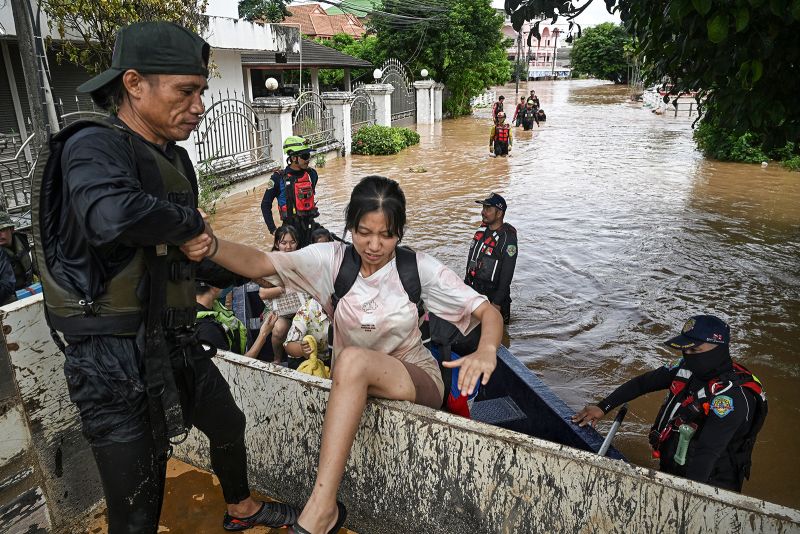Typhoon Yagi: A Force of Nature Strikes Asia
The destructive power of natural disasters is once again evident as Typhoon Yagi tore through parts of Vietnam and Thailand, leaving a trail of devastation in its wake. This massive storm, considered one of Asia’s most powerful in recent history, unleashed its fury with ferocious winds and relentless rainfall, causing widespread flooding, landslides, and destruction of infrastructure.
Vietnam and Thailand, both frequently affected by tropical storms, were ill-prepared for the intensity and scale of the disaster that Typhoon Yagi brought. The storm made landfall with wind speeds exceeding 200 kilometers per hour, leaving communities in disarray and disrupting daily life for millions of people. The unprecedented strength of Typhoon Yagi overwhelmed the region’s resources and emergency response capabilities, leading to a humanitarian crisis of immense proportions.
In Vietnam, coastal regions bore the brunt of the storm’s impact, with cities like Hanoi and Da Nang experiencing severe flooding and infrastructure damage. The inundation of water was so severe that entire neighborhoods were submerged, forcing residents to flee to higher ground or seek shelter in emergency evacuation centers. The destruction of roads, bridges, and communication networks hampered rescue and relief efforts, leaving many communities isolated and cut off from vital supplies.
Thailand also faced significant challenges in coping with the aftermath of Typhoon Yagi, as heavy rainfall triggered landslides and flash floods in mountainous regions. The storm’s impact was felt across the country, with agricultural areas suffering extensive damage to crops and livelihoods. The disruption of transportation networks further compounded the difficulties faced by local authorities in reaching affected areas and providing assistance to those in need.
The resilience of the people in Vietnam and Thailand was put to the test as they grappled with the aftermath of Typhoon Yagi. Communities came together to help each other, offering shelter, food, and support to those who had lost everything in the storm. Local and international aid organizations also mobilized to provide assistance, delivering essential supplies and medical aid to affected areas.
As the recovery and rebuilding process begins in the wake of Typhoon Yagi, the focus is on strengthening infrastructure, improving disaster preparedness, and enhancing early warning systems to mitigate the impact of future storms. The need for sustainable development practices and climate change adaptation strategies has never been more urgent, as Asia continues to grapple with the growing threat of extreme weather events.
Typhoon Yagi serves as a stark reminder of the destructive power of nature and the importance of coming together as a global community to address the challenges posed by climate change. The resilience and solidarity demonstrated by the people of Vietnam and Thailand in the face of this disaster are a testament to the human spirit and the capacity to overcome adversity in the most trying of circumstances.

